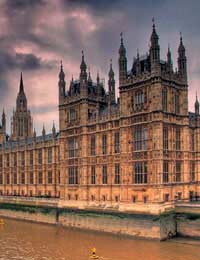The Biggest CO2 Offending Workplaces

CO2 offending workplaces are being made accountable for the energy inefficiency of their premises with the introduction of new energy certificates.
Display Energy Certificates
As part of new government legislation, new measures are being introduced to publicly advertise the energy use of buildings in a way that will not only celebrate good performers, but also shame underachievers into taking action. This is seen as a valuable tool in the fight against climate change.Since January 2009, a certificate detailing the energy use of all public sector buildings over 1,000m² must be prominently displayed so that visitors, staff and the public can see just how much energy a building is using. The Display Energy Certificate (DEC) is required for all buildings that provide a service to the public, including libraries, leisure centres and town halls.
Improving Your Rating
Each certificate is accompanied by a score of between A to G. Although energy use is largely dependent on the nature of the building, occupiers can improve their rating by introducing better heating and cooling systems, air conditioning inspections and basic energy saving (Purely Energy) measures such as switching off computers when not in use.As part of the assessment, tips are provided to help the building reduce its energy consumption in time for the next year, when the certificate is renewed. In showing how building performance can be improved they can help save not only CO2 but also public money.
CO2 Offending Workplaces
At the present the average rating for public buildings is disappointing ‘D’. In a number of cases, the building was found to be using a massive 230% more energy than it should.Although old buildings were expected to come out with low ratings, particularly vast historic structures such town halls, somewhat unexpectedly many new buildings were found to be no more energy inefficient, with very few reaching the target B rating. Many modern constructions described as being ‘green’ by their developers were found to be scoring around F and G.
The government was found to be far from standard bearers, with the Marsham Street Home Office building – built in 2005 – scoring a dismal F and the parliamentary offices at Portcullis House (2005) achieving a G, the worst possible rating. Perhaps most embarrassingly of all, the department building actually responsible for encouraging buildings to cut their carbon emissions only managed an F.
Incredibly this made the 15-year-old Eland House less green than the Natural History Museum, a vast, drafty structure that dates back to 1881 and which boasts single-skin brick walls, single-glazed windows and exhibits that demand constant heating and lighting.
A spokesperson for the headquarters of Communities and Local Government in London’s Victoria, admitted they were taken aback by the measly score but said that the assessor’s report had given them the means to do something about it, and that that was the whole point of the scheme.
Public Accountability
Of course, if they fail to do anything about it then the public can observe their inaction, because as the name implies, display certificates must be placed when anyone can see them. This is a tactic to put moral pressure on occupiers of poor performing buildings to improve their score.It is for this reason that the DEC scheme is expected to have a huge impact. League tables for local authorities’ energy efficiency will likely be introduced much in same way as there are now tables for school performance.
At the moment commercial premises are exempt from this energy transparency initiative, having only to be in possession of a second, and more forgiving, energy certificate.
Energy Performance Certificates
The Energy Performance Certificate (EPC) was introduced for commercial buildings in April 2008, as part of the same government legislation. Unlike DECs, which show how much energy is used by a building every year, EPCs only rate the fabric of the building and its energy saving (Purely Energy) potential.An EPS needs to be shown to a prospective buyer or tenant when a building over 1,000m² is bought, sold, rented or built.
With one certificate measuring building design and the other occupier behaviour, the two systems are seen as complementary. However, despite efforts by the UK Green Building Council to make both compulsory, commercial buildings are exempt from the public accountability prompted by the Displayed Energy Certificates. It is hoped this will change in the future.


Re: How to Control the Problem Of E-Waste
Amol - Your Question:I search this website on opera mini. Because I create a seminar on environment about e-waste. I…
Re: How to Control the Problem Of E-Waste
I search this website on opera mini . Because i create a seminar on environment about e-waste. i tell that website…